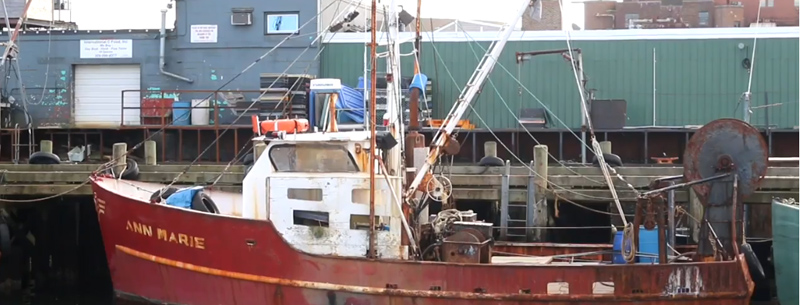As the name suggests, New Bedford Whaling National Park evidences an earlier time when the America relief on whale oil for fuel. Whale oil was used to warm houses and provide lighting. While the use of whale oil is fairly rare, no doubt to the relief of the whales, a visit to New Bedford will remind you of the past.
New Bedford Whaling National Historical Park in Massachusetts commemorates the whaling industry and its impact on the social, economic and environmental history of the United States. The park encompasses 34 acres over 13 city blocks. More than 70 structures are within the park’s boundaries.
New Bedford Trivia
- Whaling was a business that employed large numbers of American Indians and African Americans. The Quaker traditions of the city’s founders helped to turn the port into a hotbed of abolitionism and a refuge for hundreds of fugitive slaves.
- In pursuit of whales, New Bedford’s fleet traveled the world’s oceans. Men from foreign ports were frequently signed on as crew, particularly from the Atlantic islands of the Azores and Cape Verde. Many settled in New Bedford and by the mid 19th century New Bedford was one of the most ethnically diverse places in all of America.
- In 1841, a young Herman Melville shipped out of the port of New Bedford aboard the whaleship Acushnet. He would later write his epic whaling novel, Moby-Dick. During his stay in New Bedford, he is believed to have visited the Seamen’s Bethel, located in what is now the historical park. Melville describes it in Chapter 7 of Moby-Dick.
- In 1838, a young man named Frederick Johnson arrived in New Bedford with his wife Anna and found refuge at the home of African-American abolitionists Nathan and Polly Johnson. Because there were so many Johnson families of color in the city, Frederick wrote, “I gave Mr. Johnson the privilege of choosing my name.” From then on he was known as Frederick Douglass, one of the most powerful and persuasive advocates of equal rights in 19th-century America.
- New Bedford has held on to its cultural traditions and hosts a variety of celebrations and events, including the largest Portuguese festival in the United States. Commercial fishing is now the city’s principal industry, with New Bedford ranking as the nation’s number one port in terms of value of catch. If you order sea scallops at a restaurant or buy them at the market, chances are they came from New Bedford.
New Bedford Attractions
- The Park Visitor Center, located in a whaling-era bank building, has orientation exhibits and a dedicated crew of Volunteers in Parks. The park’s “VIPs” provide information year-round and seasonally lead walking tours. Self-guiding brochures highlight New Bedford’s whaling and Underground Railroad heritage.
- The New Bedford Whaling Museum holds the world’s largest American whaling and maritime history collection. Highlights include an 89-foot, half-scale replica of a whaling bark, as well as whaling implements, scrimshaw, photographs, logbooks and paintings. The museum hosts the park’s orientation movie-The City That Lit the World. It is shown daily, free of charge, in the museum’s theater.
- The Rotch-Jones-Duff House and Garden Museum is a grand whaling-era mansion set on a city block of urban gardens. Furnished period rooms chronicle the city’s history through the lives of the three families who lived in the home over a span of 150 years.
- The Seamen’s Bethel, with its marble memorials to whalemen and fishermen lost at sea, continues to serve the community through religious services, with a focus on the port’s maritime community. In the warmer months, the New Bedford Port Society opens the Bethel to visitors.
- Schooner Ernestina, owned and operated by the Commonwealth of Massachusetts, sails today with an educational mission. Originally grayed as Effie Morrissey, the schooner has been used for fishing, Arctic exploration, and a packet carrying immigrants from Cape Verde to the United States.
It is rather ironic that environmental concerns make the idea of commercial whaling obsolete in our modern society. Instead of learning our lesson and moving to renewable energy, we have simply moved on to another resource – crude oil. Somewhere, a whale is snickering.
